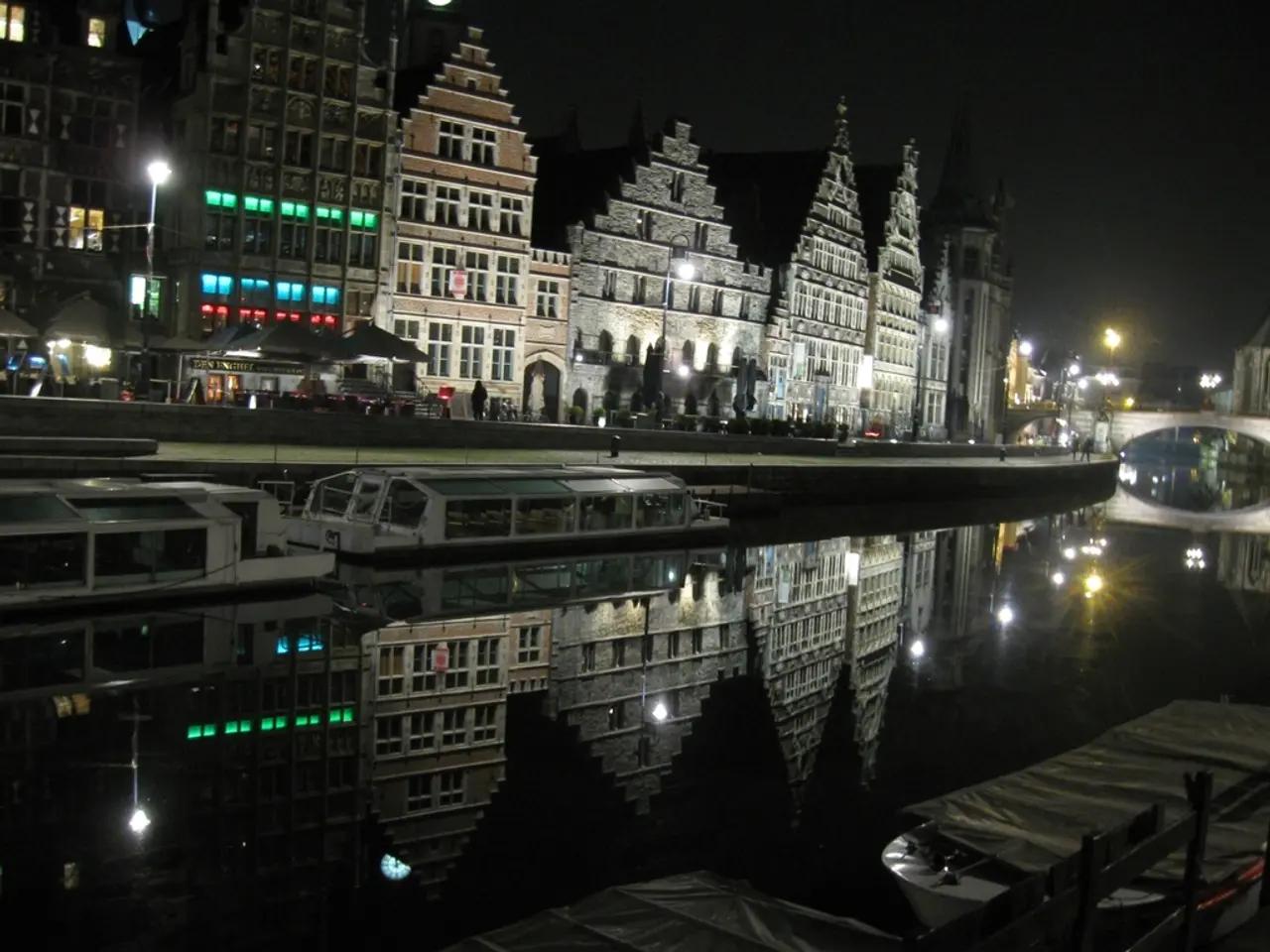Estonia launches bid for hydrogen-fueled, pollution-free ferry
Estonia Unveils Plans for Hydrogen-Powered Zero-Emission Ferry
Estonia is set to join the Nordic-Baltic region's push towards sustainable hydrogen infrastructure and decarbonized transport with the construction of a hydrogen-powered zero-emission ferry. The project, slated to start operations on the Virtsu-Kuivastu route on October 1, 2026, is part of a broader regional effort to establish interconnected hydrogen infrastructure and decarbonize maritime transport.
The Estonian State Fleet, a centre for maritime competence and innovation, will manage the ferry, which will be capable of navigating, docking, and mooring without human intervention. The ferry, designed to carry 700 passengers, will boast over 1,000 lane metres for cars, representing a 20% increase compared to the previous generation ferries.
The European Modernisation Fund and revenues from CO2 emissions trading will finance the shipbuilding of the ferry. The Finnish company Deltamarin, known for its expertise in conceptual ferry design and feasibility studies, was instrumental in developing the conceptual design and feasibility study for this project.
The ferry will be powered by hydrogen fuel, a clean energy source that generates electricity with water as the only emission. Advanced battery storage systems and enhanced safety measures for onboard hydrogen handling will ensure the ferry's efficient and safe operation.
In addition to its environmental benefits, the ferry will prioritize passenger comfort. Amenities such as an on-board restaurant, a shop, an extended recreation area, a comfortable kids play area, and an indoor/outdoor pets area will make journeys more enjoyable for passengers.
To further optimize its operations, a digital twin of the ferry will be created during its construction. This digital replica will be used to analyze and compare digital data streams during ferry operation, potentially leading to improved efficiency and reduced maintenance costs.
The deadline for submitting tenders for the construction and design of the zero-emission ferry is January 17, 2024. The project is expected to align with Estonia’s and the Nordic-Baltic region’s broader clean transport goals as part of the hydrogen corridor and island energy transition programs.
[1] Nordic-Baltic Hydrogen Corridor Project: https://www.hydrogen.ee/nordic-baltic-hydrogen-corridor-project/ [2] Clean Energy Initiatives for Baltic Sea Region Islands: https://www.eea.europa.eu/publications/islands-energy-transition-in-the-baltic-sea-region [3] Workforce and Skills Development for Zero-Emission Marine Transport: https://www.hydrogen.ee/workforce-and-skills-development-for-zero-emission-marine-transport/ [4] Technology and Innovation: https://www.hydrogen.ee/technology-and-innovation/ [5] Green Hydrogen Technology Development in Estonia: https://www.hydrogen.ee/green-hydrogen-technology-development-in-estonia/
[1] This hydrogen-powered ferry is a testament to Estonia's commitment to innovation in science and technology, as the country moves towards decarbonized transport and the establishment of regional hydrogen infrastructure.
[2] The financing of this zero-emission ferry, through the European Modernisation Fund and CO2 emissions trading, highlights the importance of environmental-science and finance in driving business decisions towards a more sustainable future.
[3] The digital twin of the ferry, which will be created during its construction, showcases how technology can be leveraged to optimize operations and reduce maintenance costs, a crucial aspect for the success of any business.
[4] The project's alignment with regional clean transport goals and programs like the hydrogen corridor and island energy transition underscores the need for collaboration within the Nordic-Baltic region to tackle global challenges such as climate-change.
[5] The ferry's design and construction will undoubtedly contribute to the development of green hydrogen technology in Estonia, aiding in its goal to become a regional hub for hydrogen infrastructure and innovation.




